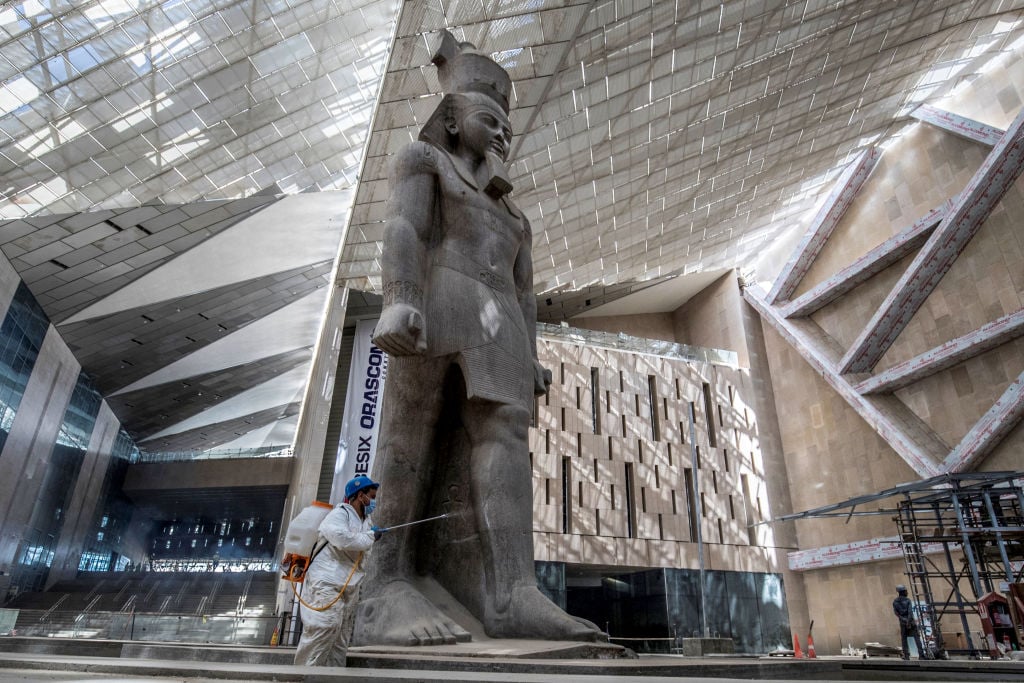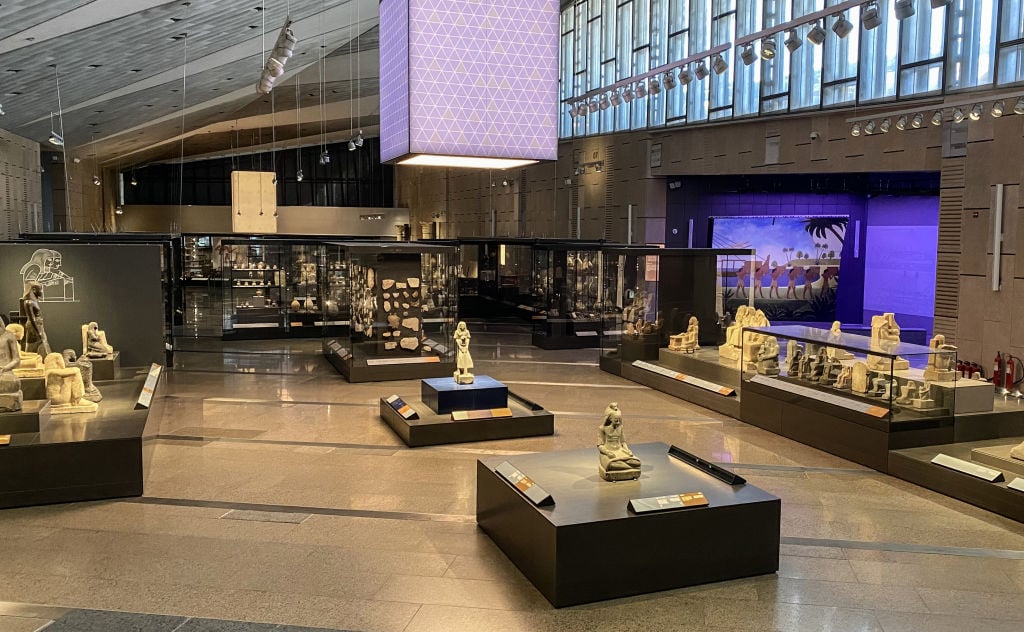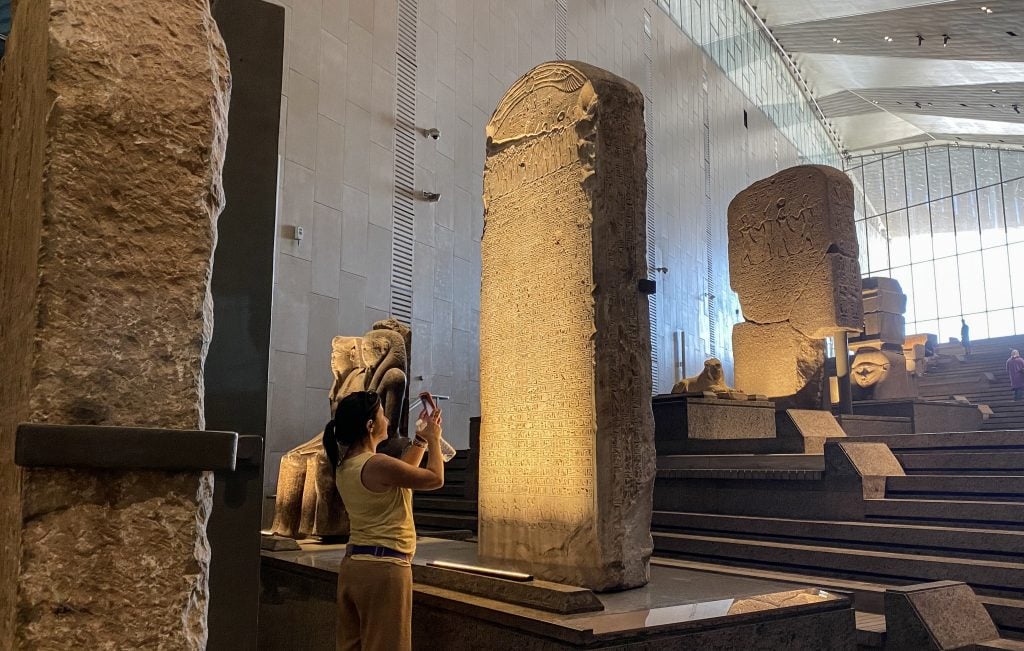Archaeology & History
The Hotly Anticipated Grand Egyptian Museum Kinda Opens for a Trial Run
Several sections of the museum remain closed for the time being, including Tutankhamun's treasure collection.

In early 2020, a select number of people were given a sneak peek inside the Grand Egyptian Museum, home to the world’s largest collection of Egyptian artifacts. It wasn’t the first time that the museum, whose construction began as far back as 2002, offered guided tours for the press. Nor would it be the last. Now, as part of a trial run helping management prepare for the official, hotly anticipated, but as-of-yet undisclosed opening date later this year, the institution will open its doors to 4,000 lucky visitors.
Sometimes referred to as the “Fourth Pyramid of Giza” because of its familiar design, the Grand Egyptian Museum is located not far from the Giza plateau, offering visitors an unobstructed view of the only wonders of the ancient world that are still standing. The 500,000 square-meter mega-structure, which cost over $1 billion and counting, boasts more than 100,000 artifacts that range from prehistory to Roman antiquity—a huge draw for Egypt’s already lucrative tourism industry.

Inside the Great Egyptian Museum during its trial run. Photo: Mohamed El-Shahed/Anadolu via Getty Images.
Visitors may be disappointed to learn that only part of the museum will be open during the trial run. Fortunately, it’s a rather big part, comprised of no less than 12 different exhibition halls that each contain more than 15,000 individual relics.
According to Al-Tayeb Abbas, assistant to the Egyptian government’s minister of antiquities, the museum is organized chronologically, with each exhibition hall focused on a different dynasty or historical period. These include Egypt’s Old Kingdom (2649–2130 B.C.E.), Middle Kingdom (2030–1650 B.C.E.), New Kingdom (1550–1070 B.C.E.), intermediate period (ca. 1070–664 B.C.E.), late period (664–332 B.C.E.), and Graeco-Roman period (332 B.C.E–395 C.E.).

Inside the Grand Egyptian Museum during its trial run, 2024. Photo: Mohamed El-Shahed / AFP via Getty Images.
Although they may not be able to admire all of the museum’s highlights in a single day, visitors will be able to get up close and personal with some of the greatest archaeological discoveries of all time. Aside from your usual sarcophagi, there are statues depicting the “elite of the king,” or high-ranking government bureaucrats, generals, and priests who served in the Egyptian court, not to mention the world’s only hanging obelisk, which can be found near the museum’s front façade.
As mentioned, some parts of the Grand Egyptian Museum remain closed off for the time being. Sadly, one of these areas happens to be the institution’s most eagerly awaited attraction: the treasure collection of Tutankhamun, the legendary pharaoh who passed away at age 19.

Inside the Grand Egyptian Museum during its trial run, 2024. Photo: Mohamed Elshahed / Anadolu via Getty Images.
Considering how often it has appeared in international news outlets over the years, it should come as no surprise that the Grand Egyptian Museum was initially supposed to open earlier, with its initial 2020 target being pushed back to 2021 before being delayed further still. These delays have been attributed to numerous causes, from the political upheaval to a lack of funding.
Although the museum has yet to announce an official opening date, this trial run suggests the end is closer than ever.





